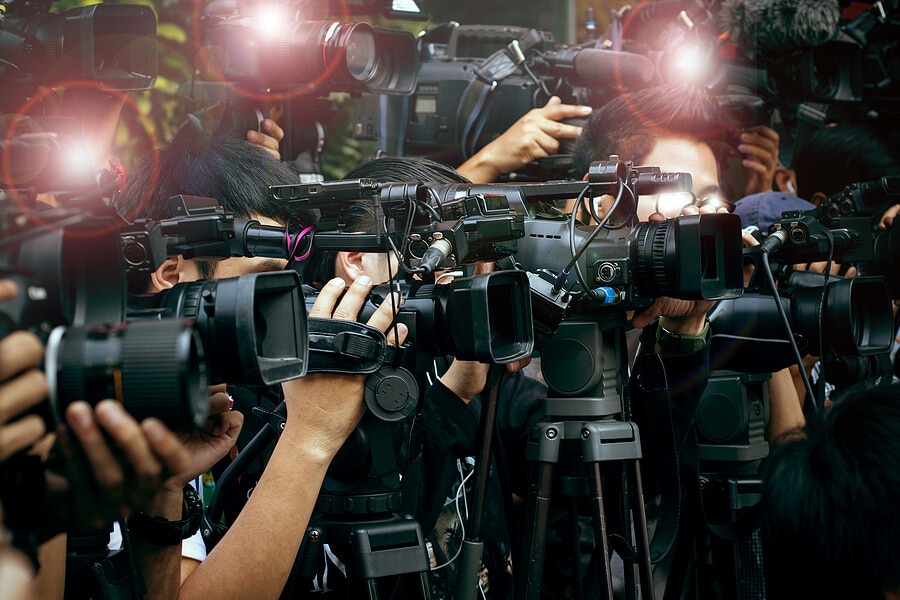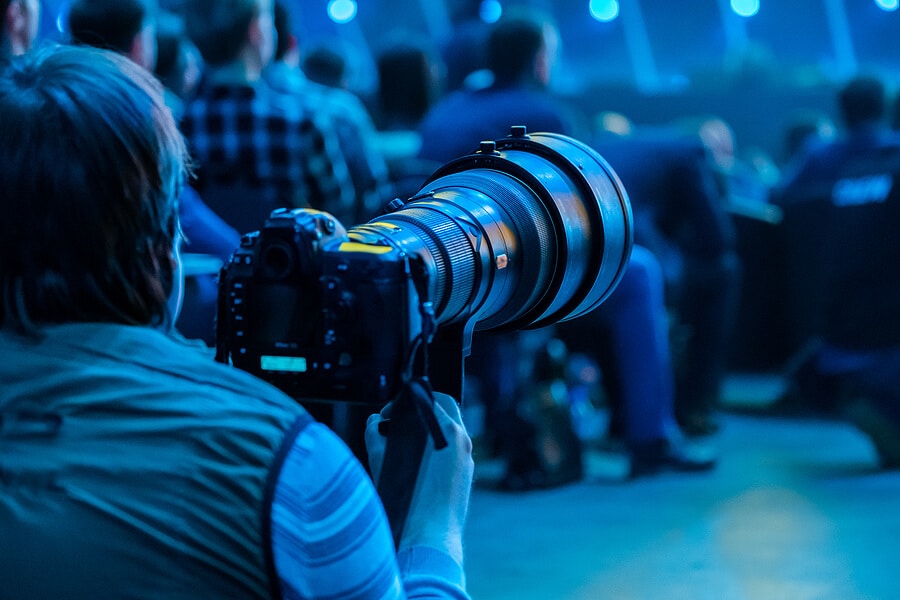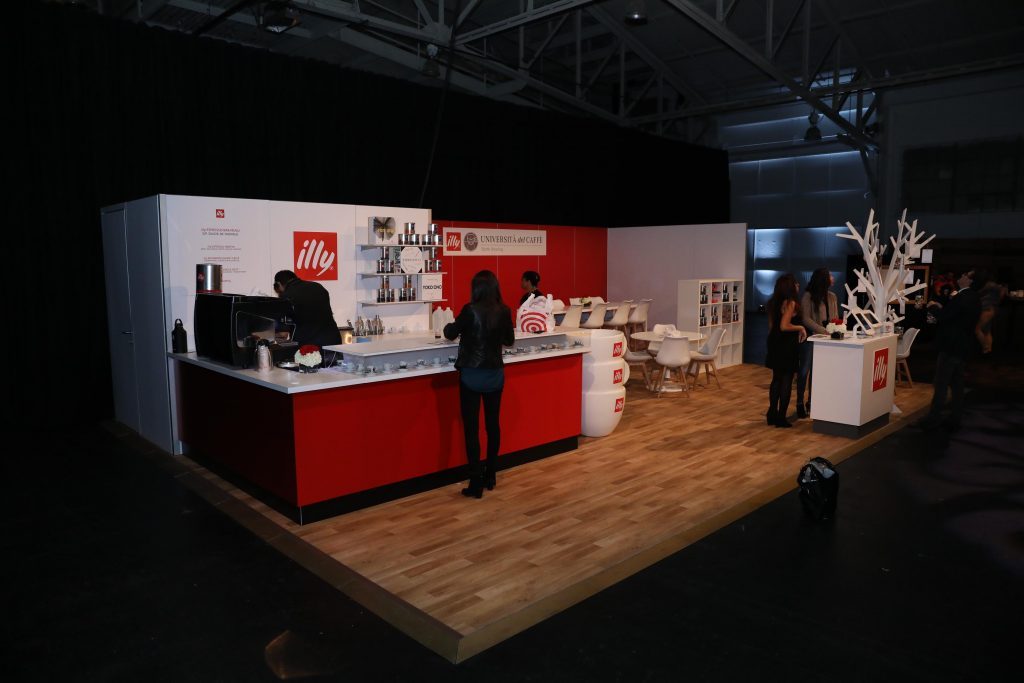One major goal for many events is to get some media attention. Press coverage increases event attendance and builds brand awareness. Usually, that means getting journalists and other members of the press to cover your event. But how do you get enthusiastic press coverage for your event?
To get the best results, it’s important to know not just how to invite the press to your event, but how to treat them when they show up. Follow these tips and tricks for an excellent media strategy.
1. Develop a Media List
The first step in your media outreach strategy is to decide who you want to reach out to. It’s helpful to have a media list to refer to. This is simply a list of the media people you can reach out to when it’s time to circulate your press release and press kit. This might include:
- Public relations professional
- Social media influencers
- Journalists from newspapers, TV, and radio stations
- Digital media professionals
- Local TV stations
- Other media contacts that you know or have already demonstrated interest in your brand
Make sure to be selective with media lists. You don’t necessarily have to send a press release to everyone on the list, for every event. Sometimes the difference between an event that flops with the press and one that successfully attracts media attention is simply researching which press (and influencers) to invite. There’s no sense in reaching out to media outlets that don’t have the kind of audience you want to target. It can even be counterproductive to constantly send irrelevant press releases out to journalists or PR people. Some people may consider this spamming and consign your information to the trash folder.
2. Write a Press Release
Press releases have, for a long time, been associated more with print media. That association has held strong, even though print media plays a reduced role in news distribution today. As a result, some event organizers no longer think to write press releases about their events. What they don’t realize is that press releases aren’t just for traditional print news media and TV, they’re for digital media outlets too. You can send your event’s press release to a long list of online media outlets. With the right angle and a good story, you can score some great publicity, for very little cost.
Of course, for some event planners, neglecting to write a press release is a matter of not knowing how to go about it! Luckily, press release writing is fairly simple. While there are no actual rules, there is a press release format that most releases follow. There are many press release templates you can choose from, but keep things simple.
Once it’s ready to go, you have two options for distribution. One is to send it to press release distribution services, each of which charge a per-release fee that ranges from $19 per release to several hundred dollars. The amount you pay depends on which service you choose and how wide you want distribution to be. The other option is to research journalists and news outlets, and send your press release to them directly. This is the better option if you’re on a tight budget, but it does require some extra time investment.
One of the trickiest things about writing a press release is knowing when to send it. Getting media to pay attention to your event requires advanced planning! Don’t make the mistake of waiting until the day or week before the event. You do need to give journalists enough lead time to actually read your information and then write and publish a piece, plus time for their audience to read it.
Your initial release should go out a month or two before your event is due to start. A final pre-event release with last-minute additions can go out a week or two before. Current data suggests Thursdays are the best days to send out press releases in order to maximize open rate. So send those releases on Thursdays, and avoid Wednesdays and Fridays, when the open rate is lowest.
Make sure to follow up on press releases within two to three days via email. Remind them of who you are and that you recently sent a press release. Let them know you’re available if they have any further questions or need additional information.
3. Create a Press Kit
If you write a press release, you might as well create a press kit at the same time! Press kits don’t need to be stuffed full of massive amounts of detail, but there are a few things that are useful to include.
- The event press release
- FAQs about the event and hosting company
- Lists of speakers, presenters, sponsors, and exhibitors, where applicable
- Highlights of the schedule or agenda
- You may even want to include a few high-quality visuals such as the event logo, event infographics, and one or two images of other recent events
- Add a tip sheet. This is a compilation of the most important information about the event that you want the press to have in mind when they’re reporting.
4. Write a Media Advisory
A media advisory is like an invitation, sent to specific members of the press. These should go out to any media outlets or individual members of the press whom you’d like to cover your event. This should be fairly short—only a paragraph or two is needed—and have only the essential information: Who, What, When, Where, Why. Make sure to include some info about what’s happening at the event, and why it’s worth their time to attend. Send the media advisory to those on your media list, again making sure to give them plenty of lead time.
Note: Don’t forget to invite important influencers, who are not necessarily traditional members of the press. Social media influencers sometimes have a bigger influence than traditional media. Utilize each event to cultivate influencer relations for your industry.
5. Follow Up Before the Event
Wait a few days after sending out your media advisory, and then follow up with each recipient. Let them know you’re emailing to confirm they received it, and ask if they have made plans to cover your event. Don’t worry if you don’t get a positive answer at this stage. Many journalists won’t know what they’re covering for any specific day until the day itself, or at most a day or two before. The personal reminder still increases your chances that a specific journalist or outlet will show up.
Schedule a final follow-up the day before, and email or call each individual to confirm whether or not they’re planning to attend or cover your event. For a multi-day event, you may want to follow up an additional time around half-way through for any press members who haven’t yet attended.
6. Plan for Flexibility
If you have members of the press in attendance, you’ll get the best media coverage out of it if you can show them something that’s worth reporting on. If they show up and don’t find anything interesting going on, it’s a wasted opportunity—not just for this event, but potentially for subsequent events as well, as they may be less inclined to attend your events in the future.
If possible, try to pin down (to within an hour or two) when journalists and other press members plan to attend. This can help ensure you’re able to guide them to the most interesting and newsworthy content happening at any particular time. But remember that they’re covering the event as a courtesy to you, not the other way round—so don’t try to insist they show up at a particular time during the event.
7. Expedite the Check-In Process
For live events, having a dedicated press check-in area is a good way to locate media guests and get them to where they need to be promptly. Most members of the press appreciate being able to get this part of the job done quickly, so an expedited check-in process is a must.
8. Set Up a Media Room
The most efficient way to make sure all your media guests are taken care of is to set up a room for their exclusive use. Make sure it has free Wi-Fi access and charging stations at the least, along with refreshments and sponsor swag. You can also leave copies of the press release, press kit, and tip sheet for anyone who needs them. Press members covering events regularly expect to be taken care of. A press room also makes it easier for you to know where to go when you want to introduce yourself, build rapport with journalists, or announce something interesting happening right at that moment.
9. Prepare a Shot List for Photographers
For post-event press coverage, it helps to have plenty of interesting, high-quality images of the event available. You can’t rely on the media, or anyone else, to supply them, so having your own in-house photographer is important.
You must also make sure to provide your photographer with a shot list. A shot list is a checklist of all the different shots you want the photographer to take while they’re at the event. It should also include details about where and when they need to be in order to get those shots. Photographers will spend some time grabbing candid shots, but providing a shot list is important if there’s anything specific you want them to cover.
A shot list might include things like:
- Red carpet arrivals
- Green room shots
- Keynote speakers and other special presentations
- VIPS and other special guests
- Brand or sponsor booths or marketing messages
- VIP/special guest handshakes (AKA “grip and grins”)
- Crowd shots
You don’t necessarily have to get specific with your shot list—if you don’t actually have any specific shots in mind, that’s fine! But bear in mind that if there is anything specific you want, you do have to make sure to include it in the list. Your photographer won’t know unless you tell them.

10. Post-Event Follow-Up
Make sure to spend some time on publicity the day after the event. This is a good time to pick out the best photos, choose some good video clips, and start generating your own press. Even if there wasn’t a strong media presence at your event, you can still get the media’s attention afterwards. Post the best visuals to your social media accounts, including keynote speakers or VIPs, and then tag those people along with selected journalists. You may even want to send out a new press release summarizing the highlights of the event.
In addition, make sure to reach out to every member of the press who attended the event. Ask them if they need any additional information, images, or quotes. This is best done via email, as you can then draft those messages ahead of the event and send them out immediately after. If someone covers your story, they’ll appreciate the extra images and information.
Don’t Get the Press Involved Until You’re Ready
While some people say there’s no such thing as bad publicity, there’s certainly a case to be made for avoiding publicity until you’re ready for it. Make sure that your website, social media, and other event infrastructure is firmly in place before you start courting the press. You don’t want those news stories to point potential attendees to an event website that doesn’t work. Getting media attention before you’re ready can lead to disastrous results.
Make It Easy for Press to Attend, and They Will
There are no sure-fire 100%-success-guaranteed methods for getting the media’s attention. But as a general rule, if you capture their interest, and make it easy for them to get the job done, you’re definitely more likely to get a nibble or two. And as you start to prove that your events are worth covering, you’ll have plenty of press coverage for every event you hold.










